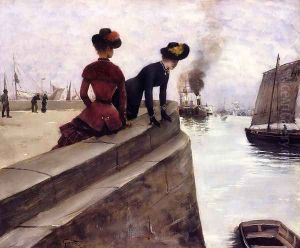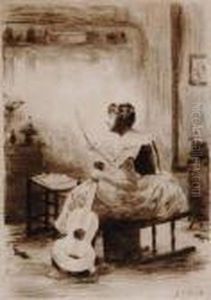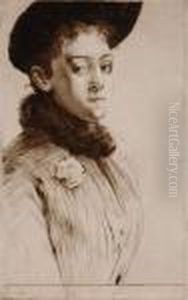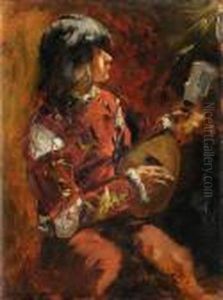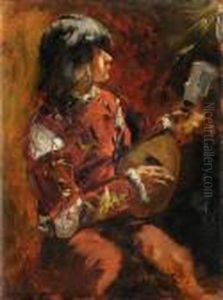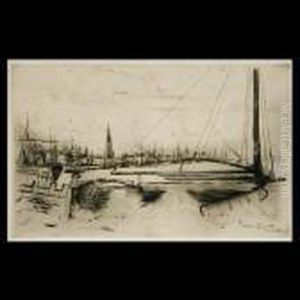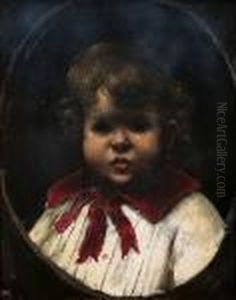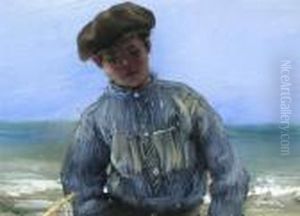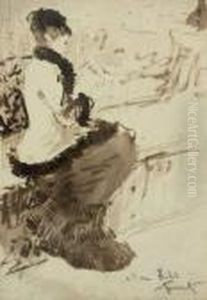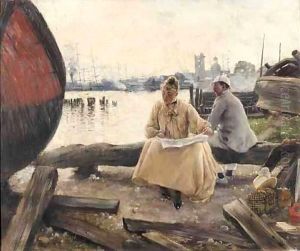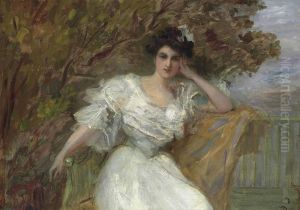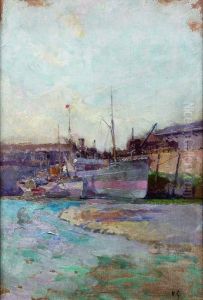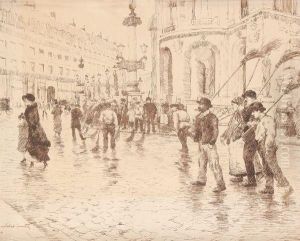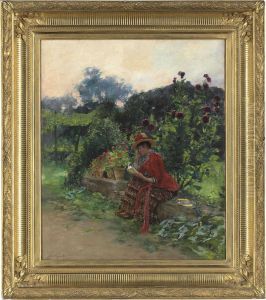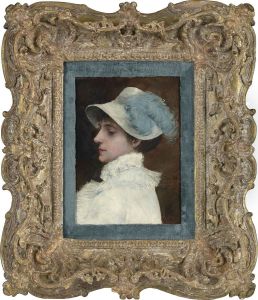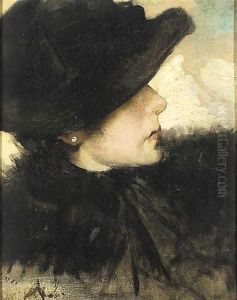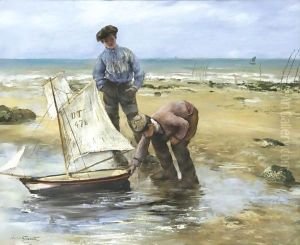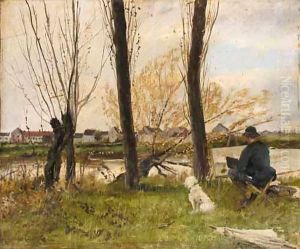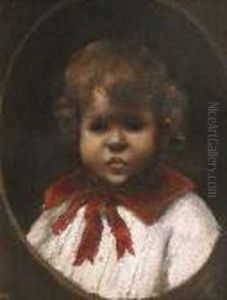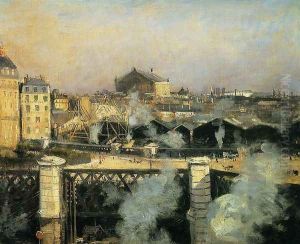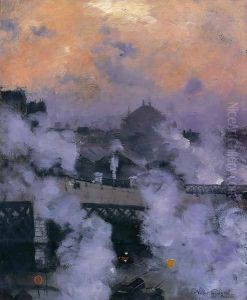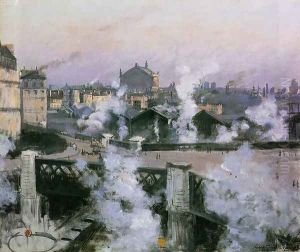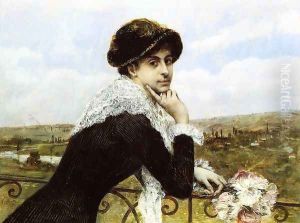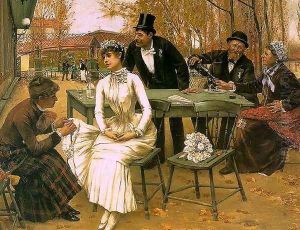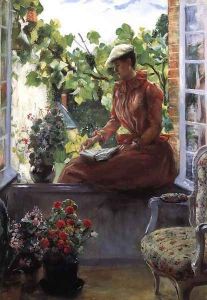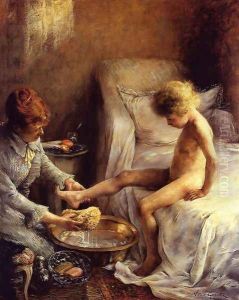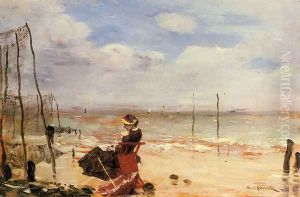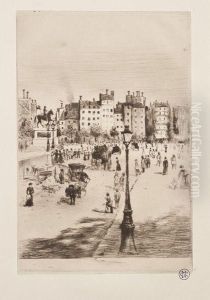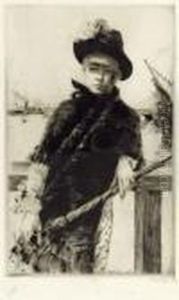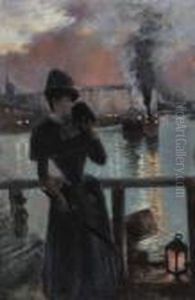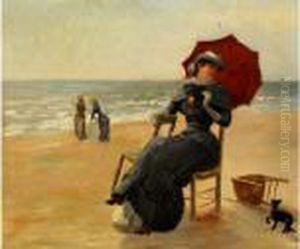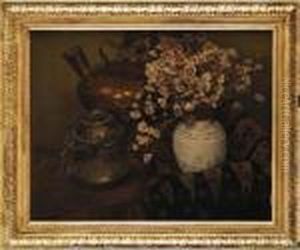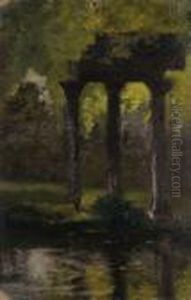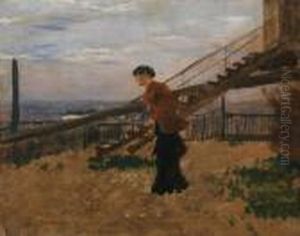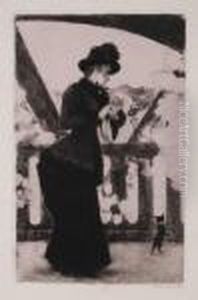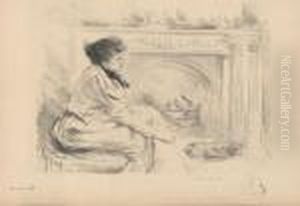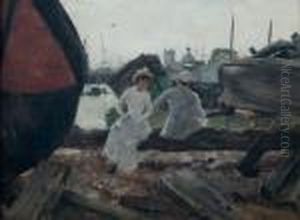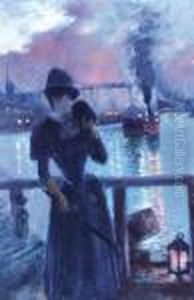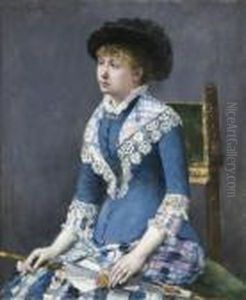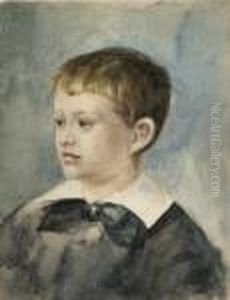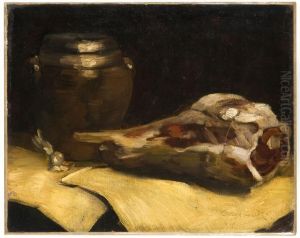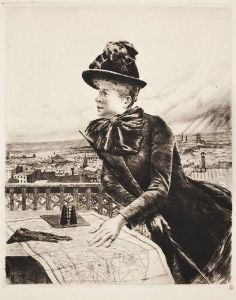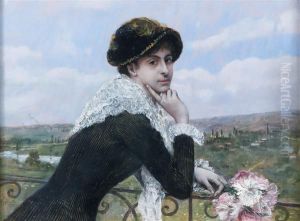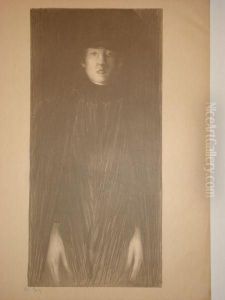Norbert Goeneutte Paintings
Norbert Goeneutte was a French painter, engraver, and illustrator, born on July 23, 1854, in Paris. Goeneutte's early life was marked by his interest in art, and he initially studied law before turning to painting. He studied under Isidore Pils, who was a classic academic painter, but soon Goeneutte became influenced by the burgeoning Impressionist movement.
His work often depicted Parisian life, its boulevards, and suburban landscapes, with a delicate sensitivity to light and atmosphere that aligned him with the Impressionists. Although he participated in the Impressionist exhibitions of 1879, 1880, and 1881, he never fully embraced the movement's radical techniques and ideologies. Instead, Goeneutte found a balance between the academic traditions and the new approaches to painting that were emerging at the time.
Aside from painting, Goeneutte was also an accomplished printmaker and book illustrator. He was particularly known for his etchings, which reflected a keen eye for detail and an ability to capture the essence of his subjects. After the death of his friend and fellow artist, Édouard Manet, Goeneutte completed some of the etchings for the illustrated edition of 'Les Fleurs du mal' by Charles Baudelaire, which Manet had been unable to finish.
In 1889, Goeneutte's health began to decline, and he moved to the Paris suburb of Auvers-sur-Oise, where he continued to work until his death. He painted many landscapes of the area, as well as portraits of its inhabitants. Goeneutte's work from this period shows a mature style characterized by a more subdued palette and a focus on the tranquil aspects of life.
Tragically, Goeneutte's life was cut short when he died on October 9, 1894, at the age of 40. Although his career was brief, he left behind a body of work that captures the spirit of an era that was on the cusp of modernity. His works are held in various collections around the world, and he is remembered as a talented artist who bridged the gap between the academic and Impressionist styles of his time.
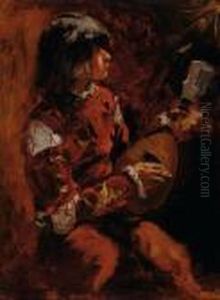
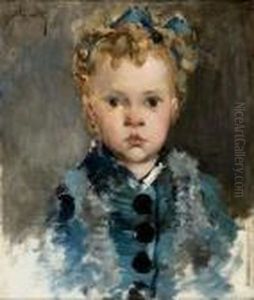
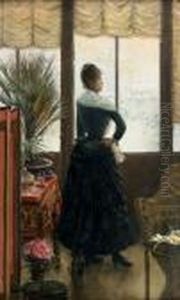
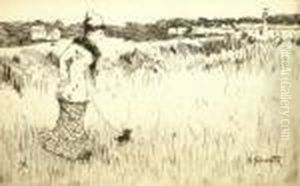
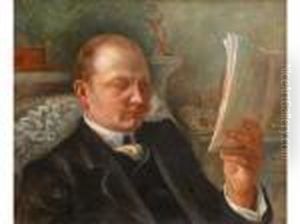
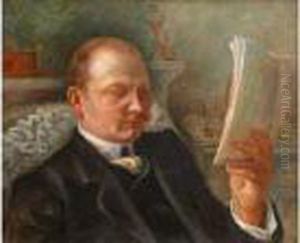
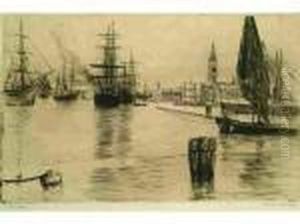
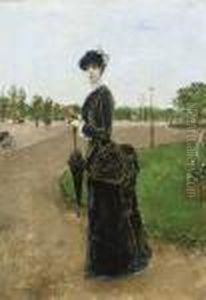

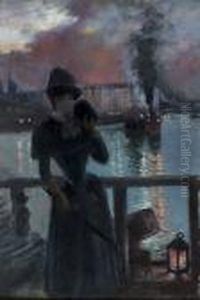
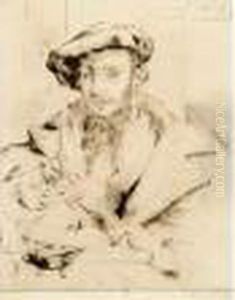
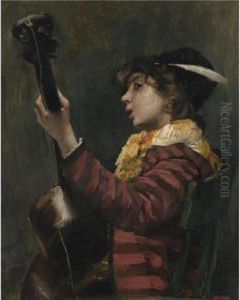
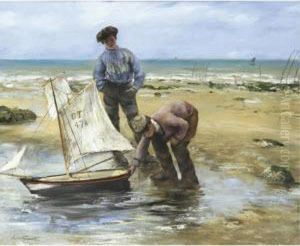
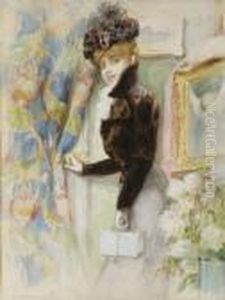
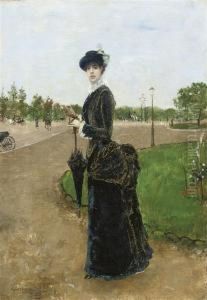
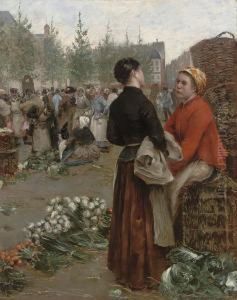
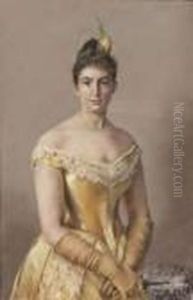
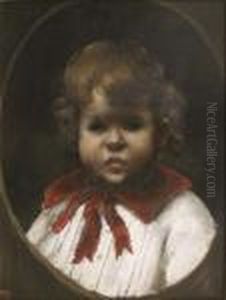
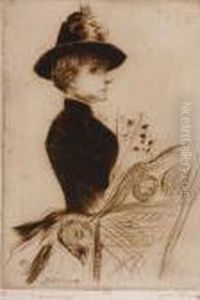
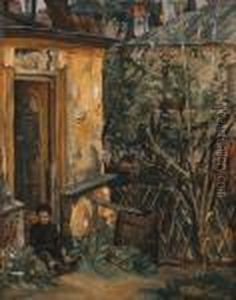
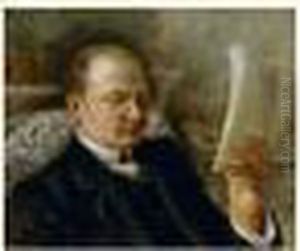
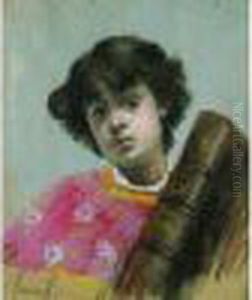
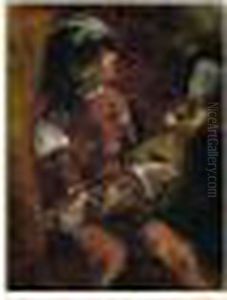
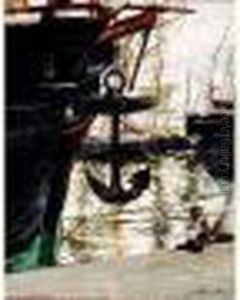
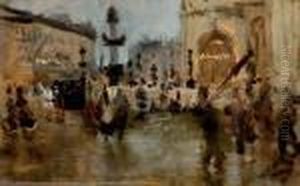
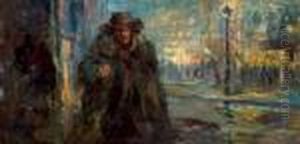
![Portrait Presume D'eva Gonzales
De Profil [ ; Presumed Portrait Of Eva Gonzales In Profile ; Oil On
Panel Signed Upper Left ; Will Be Included In The Catalogue Raisonne
Being Prepared By The Grand-nephew Of The Artist, Norbert-georges
Goeneutte]](https://www.niceartgallery.com/imgs/2268980/s/norbert-goeneutte-portrait-presume-deva-gonzales-de-profil-presumed-portrait-of-eva-gonzales-in-profile-oil-on-panel-signed-upper-left-will-be-included-in-the-catalogue-raisonne-being-prepared-by-the-grandnephew-of-the-artist-norbertgeorges-goeneutte-2095a028.jpg)
